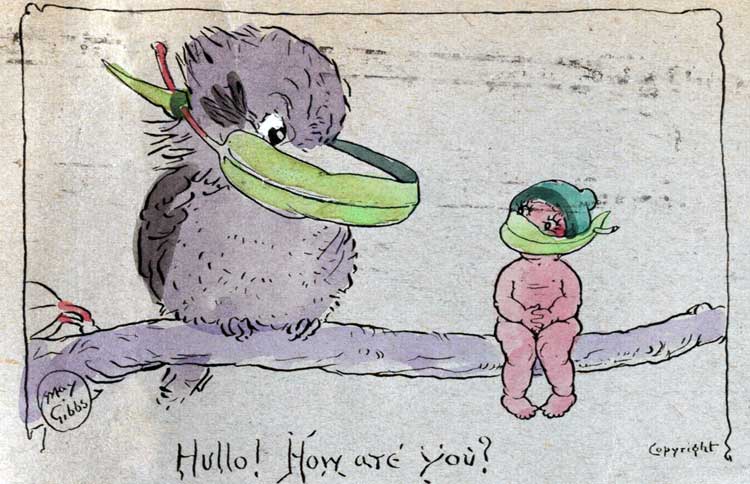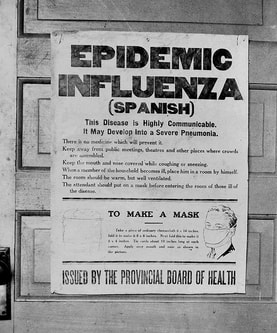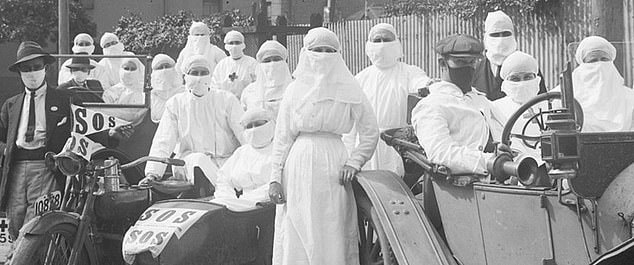WILLOUGHBY HERITAGE FESTIVAL TOUR
PANDEMIC - How the epidemics of the past influence how we deal with COVID-19 today
Right from the beginning of European settlement, the challenges of disease and epidemics have been very much at the forefront of government and public consciousness.
From the very first Smallpox epidemic that took place 1789 in Sydney, Australians have seen, first hand, the devastating effects that diseases can create. Weakened by excruciatingly hard work, and hunger from repeated crop failures, many 18th and 19th century new arrivals succumbed to disease. With the Aboriginal population not having been exposed to Asian or European pathogens before, they had little to no natural resistance to these infections. This resulted in catastrophic death rates in the Aboriginal population of the Sydney Basin, and later, across the continent.
From the very first Smallpox epidemic that took place 1789 in Sydney, Australians have seen, first hand, the devastating effects that diseases can create. Weakened by excruciatingly hard work, and hunger from repeated crop failures, many 18th and 19th century new arrivals succumbed to disease. With the Aboriginal population not having been exposed to Asian or European pathogens before, they had little to no natural resistance to these infections. This resulted in catastrophic death rates in the Aboriginal population of the Sydney Basin, and later, across the continent.
At the time, diseases such as Smallpox, Scarlet fever, STD's, Asiatic Influenza, Tuberculosis, Measles, and Cholera were very good at killing white. black and yellow people alike. It was not known how these diseases were transmitted, & there was no known cure. This made trying to contain these diseases, to prevent them from spreading, with what little you actually did know about it, literally a matter of life or death. At first ships were sent to Spring Cove to stay in Quarantine, then eventually the Manly Quarantine station is established in the late 1820s.
Many early suburbs of Sydney did not have running water, or sewage until the mid to late 19th century. . Households regularly used what were called chamber pots, which were kept in bedrooms overnight, and emptied out on to the street and gutters in the morning. This regularly resulted in terrible smell, and diseases such as diptheria, cholera and other diseases associated with poor sanitation. If you visit places such as Camperdown cemetery, and other church graveyards, you can literally read on gravestones the manner of how many people died. This is in part how the north shore of Sydney got its reputation as being a place where "silvertails" lived. It was literally sold to the well to do residents of what is now the inner city suburbs of Sydney, as a hugely healthier place to live!
Many early suburbs of Sydney did not have running water, or sewage until the mid to late 19th century. . Households regularly used what were called chamber pots, which were kept in bedrooms overnight, and emptied out on to the street and gutters in the morning. This regularly resulted in terrible smell, and diseases such as diptheria, cholera and other diseases associated with poor sanitation. If you visit places such as Camperdown cemetery, and other church graveyards, you can literally read on gravestones the manner of how many people died. This is in part how the north shore of Sydney got its reputation as being a place where "silvertails" lived. It was literally sold to the well to do residents of what is now the inner city suburbs of Sydney, as a hugely healthier place to live!
However - this was not the only epidemic that was made worse by poor sanitation. In 1900, the city of Sydney, particularly Millers Point, the Rocks, Wooloomoloo and the docks around what is now called Barangaroo and Darling Harbour, suffered from Bubonic Plague - otherwise known as " The Black Death". This resulted in a war being declared on the rat and mouse population - and major, long overdue clean up of city streets...
The Spanish Influenza epidemic hit Australia, just over 100 years ago, in 1919. Compared to some countries, our death rate was marginally lower. However the really scary thing about this epidemic, is that it not only killed young and old alike, it killed more people around the world, than World War One. The cartoon at the top of the page, drawn by Sydney childrens author and cartoonist May Gibbs in 1919, only begins to convey the tip of the iceberg of how drastically society was affected by this epidemic.
This tour will explore how the lessons learned by previous generations drives how we respond to challenges such as the Novel Coronavirus today. It is a story of some of the worst - and some of the best - that people under stress can do. Most importantly - it is a story of ingenuity, bravery, compassion, and of survival
Pandemic - how epidemics of the past drive how we respond to COVID-19 today 18th April
A$20.00 - A$30.00
Saturday night 8.15pm 18th April 2020, Tour commences at the central water feature, The Forum shopping mall, 203-205 Pacific Highway St Leonards, opposite the entrance to St Leonards Railway station.
Pandemic - how epidemics of the past drive how we respond to COVID-19 today - 2nd May
A$20.00 - A$30.00
Saturday night 8.15pm 2nd May, 2020, Tour commences at the central water feature, The Forum shopping mall, 203-205 Pacific Highway St Leonards, opposite the entrance to St Leonards Railway station.
Pandemic - how epidemics of the past drive how we respond to COVID-19 today. 16th May
A$20.00 - A$30.00
Saturday night 8.15pm 16th May, 2020, Tour commences at the central water feature, The Forum shopping mall, 203-205 Pacific Highway St Leonards, opposite the entrance to St Leonards Railway station.






